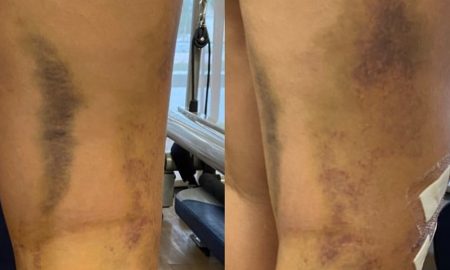
A Comprehensive Guide on How to Heal Anxious Attachment Style

If you often find yourself seeking constant reassurance from your partner or requiring endless validation to feel secure, you may be experiencing what’s known as an anxious attachment style. Characterized by anxiety, clinginess, and a fear of abandonment, this pattern can make relationships challenging. However, understanding your attachment style is crucial in rewriting your relationship narrative. This article will explore how to heal anxious attachment.
How to Heal Anxious Attachment Style
Healing from an anxious attachment style begins with self-awareness. Recognizing your behaviors and understanding their roots can empower you to make different choices. Anxious attachment often stems from inconsistent caregiving in childhood, leading to hyperfixation of attachment figures and a pervasive sense of insecurity. By exploring these early experiences with compassion, you can begin to see these behaviors not as inherent flaws but as patterns that you have the power to change. Here is how to heal anxious attachment:
Reframe Your Behaviors for Better Outcomes
For those grappling with anxious attachment, it’s beneficial to reframe oversensitive responses—like acute awareness of mood shifts—as protective mechanisms rather than overreactions. Understanding that you seek reassurance because you feel threatened allows you to adopt healthier behaviors, such as self-soothing techniques or engaging in therapeutic discussions, to address these fears constructively.
Face the Past to Rewrite the Future
One of the most transformative approaches is to engage in emotionally corrective experiences. This involves revisiting painful past experiences and reimagining them with positive outcomes, thus breaking the cycle of negative associations. By sharing your needs openly and allowing others to respond, you create new, supportive experiences that can help rewrite old, limiting scripts.
Map Out and Share Your Insecurities
It’s also crucial to become aware of automatic, catastrophic thoughts and to challenge these mental shortcuts. Sharing your fears and insecurities with your partner rather than letting them spiral can help prevent misunderstandings and strengthen your relationship. Transparency about your emotional state encourages a healthier dialogue and reduces the likelihood of self-sabotaging behaviors.
Choose a Partner Who Understands Intimacy
Avoid relationships that trigger your anxious attachment, such as those with avoidantly attached individuals who typically keep intimacy at bay. Instead, seek partners who exhibit qualities like consistency, availability, reliability, responsiveness, and predictability. These traits help create a stable relationship environment that can foster security and trust.
Look for Emotional Stability and Warmth
A partner who demonstrates emotional stability and warmth can be particularly beneficial. Such individuals handle insecurities not with detachment but with empathy and support. They provide reassurance through their presence and actions, making it easier for you to express your emotions freely and fearlessly.
Clear Communication and Defined Boundaries
Effective communication and clear boundaries are essential. Look for a partner who communicates their needs clearly and respects your boundaries. This clarity reduces relationship anxiety by eliminating ambiguity about where you stand and what is expected.
Commitment to Relationship Progress
A commitment to advancing the relationship and a willingness to make future plans can significantly enhance feelings of security. Your partner’s consistency in actions and words reassures you of their investment in the relationship and intent to maintain it.

Abdurrahim Israfilov | Pexels | A commitment to advancing the relationship and a willingness to make plans can significantly enhance feelings of security.
Emulate Secure Attachment Patterns
Embodying secure attachment traits can gradually become a habit that fosters healthier interpersonal dynamics. This practice involves consistently engaging in behaviors that promote safety and reliability, both in yourself and your relationships.
Healing from an anxious attachment style is indeed a profound journey. It requires patience, understanding, and a commitment to personal growth. By actively seeking to understand your behaviors, choosing supportive relationships, and fostering open communication, you can cultivate secure and fulfilling connections that enrich your life.
More in Way of Life
-
Is It Safe to Travel to Paris? Essential Tips for Tourists
When considering a trip to Paris, one of the first questions that often arises is, “Is it safe to travel to...
June 20, 2024 -
Hematoma vs Bruise: What Is the Difference?
When it comes to injuries, hematoma vs bruise are often used interchangeably, but they refer to different medical conditions. Understanding the...
June 12, 2024 -
What Is Unipolar Depression? Here’s What You Need to Know Right Now
Depression casts a long shadow over many lives, with symptoms that affect everything from our energy levels to our ability to...
June 7, 2024 -
Why Is My Skin Peeling on My Face After Skincare? Here’s What You Need to Know
Experiencing skin peeling on your face after implementing a skincare routine can be perplexing and frustrating. This phenomenon, where the skin...
May 23, 2024 -
What Is a Mental Edge, and How Do You Get It?
Have you ever wondered why some individuals seem unshakably confident under intense pressure, finding a way to excel when it matters...
May 15, 2024 -
When to Worry About Varicose Veins? Here’s What You Need to Know
Varicose veins are a common issue, affecting about 20% of adults. They’re usually seen as unsightly blemishes on the legs but...
May 12, 2024 -
Why Is Discipline Important: The Ultimate Guide to the Importance of Discipline
Discipline is undoubtedly one of life’s most crucial character traits. It shapes how we approach tasks, manage our time, and...
May 3, 2024 -
Have I Fallen Out of Love or Am I Depressed? Everything You Need to Know
Have I fallen out of love or am I depressed? You’re not alone in this query. In the diversity of human...
April 26, 2024 -
What Does Lung Cancer Breath Smell Like?
Cancer is one of the most formidable diseases of our time, characterized by the uncontrolled growth of cells that invade and...
April 20, 2024

















You must be logged in to post a comment Login